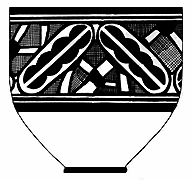
INTRODUCTION
After more than a decade of inertia in domestic and foreign archaeological activities in Iran following the 1978 revolution, recent years have witnessed the beginning of a new era favorable for the systematic resumption of such activities under the leadership of Mr. Serajaddin Kazerouni, the Director of the Cultural Heritage Organization, and his deputies, Mr. Jalil Golshan and Mr. Naser Chegini.
Thanks to Mr. Kazerouni's encouragement and support, I was able to conduct an ethnoarchaeological survey in Fars. The province of Fars, the homeland of the Persian Achaemenids, is archaeologically one of the richest regions in Iran. Fars has been populated since the Middle Palaeolithic. Although the evidence for the Early post-Pleistocene occupation of Fars is meager, and the processes of the initial development of agriculture and animal husbandry are not particularly well-known, our knowledge about the development of complex societies and the rise of early states there is comparatively superior to a number of other regions in Iran.
My research design involved the study of a mobile pastoralist tribe (Dareshori) of the Qashqaii confederation, and an archaeological survey of the valleys through which the Qashqaii migrate to and from their winter/summer pastures. I was seeking to find answers to a number of questions I raised in my doctoral thesis and in an article (Iran 26 1988:17-34) concerning: (a) the historical development and characteristics of the settlement patterns in the valleys to the northwest of Marv Dasht; (b) the possible correspondence between the geographical extension of Bakun culture and the traditional territories of the mobile pastoralists (in this case the Qashqaii); (c) the role of prehistoric mobile pastoralists in the development of complex society; and (d) an understanding of the material correlatives of behavior of the mobile pastoralists in their environment so that their presence could be detected archaeologically in future excavations in the region.

